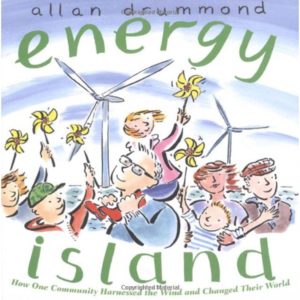
|
Allan Drummond’s Energy Island (Farrar, Straus & Giroux, 2011) is the picture-book story of the Danish island of Samso, which has come to rely almost entirely on renewable energy, using wind turbines, solar panels, and biomass converters, riding bicycles, and driving electric cars. For ages 6-10. |
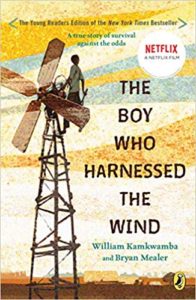
|
By William Kamkwamba and Bryan Mealer, The Boy Who Harnessed the Wind (William Morrow, 2010) is the story of 14-year-old William who, determined to bring electricity to his poverty-stricken Malawi village, finds an old physics book with diagrams of windmills and manages to fabricate a working windmill from scraps, junk, and old bicycle parts. The book – an inspirational story of hope and ingenuity – is targeted at teens and adults. A Young Readers version of The Boy Who Harnessed the Wind (Dial, 2012) is available for ages 6-11. |
|
Listen to William Kamkwamba’s TED talk on his windmill project. |
|
From PBS’s SciGirls, Blowin’ in the Wind is a project for building a model windmill capable of hoisting a weight. |
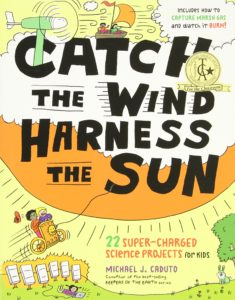
|
Michael J. Caduto’s Catch the Wind, Harness the Sun (Storey Publishing, 2011) is an informative activity book on energy and global climate change, illustrated with cartoons, diagrams, and color photographs. For example, kids build mini-windmills, power a battery with a bicycle, and make a solar heater. For ages 8-12. |
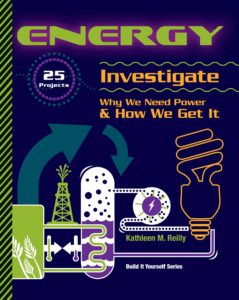
|
Kathleen Reilly’s Energy (Nomad Press, 2009), subtitled “Investigate Why We Need Power and How We Get It,” is an informational activity book with chapters devoted to electricity, hydrogen, petroleum, coal, nuclear power, wind, hydropower, solar power, geothermal energy, and biomass. Included are fact boxes, word lists, and 25 hands-on projects, among them building a steam-powered boat, a solar-powered water heater, and an electric burglar alarm. For ages 9-12. |
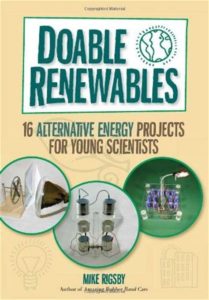
|
Mike Rigsby’s Doable Renewables (Chicago Review Press, 2010) is a collection of “16 Alternative Energy Projects for Young Scientists.” Among these are a “Simple Heat Engine” made from corrugated cardboard, rubber bands, and a sewing needle that runs off an incandescent desk lamp; and a fascinating solar-powered seesaw, operated by sunlight focused through a magnifying glass. (You’ll need a bimetallic strip for this one, that you obtain by tearing apart a large-dial thermometer, but it’s worth the effort.) Other projects involve fooling around with devices that you buy outright, such as a solar drinking bird, a thermobile – dunk it in a cup of hot water and the wheels go around, and a radiometer. (Sources provided.) Each project includes brief background information and a list of “More to Think About” questions. For ages 9 and up. |
|
Power Play is an interactive activity in which players, by clicking and dragging, assemble Rube-Goldberg-like machines for capturing power from various sources such as wind, water, and heat. |







